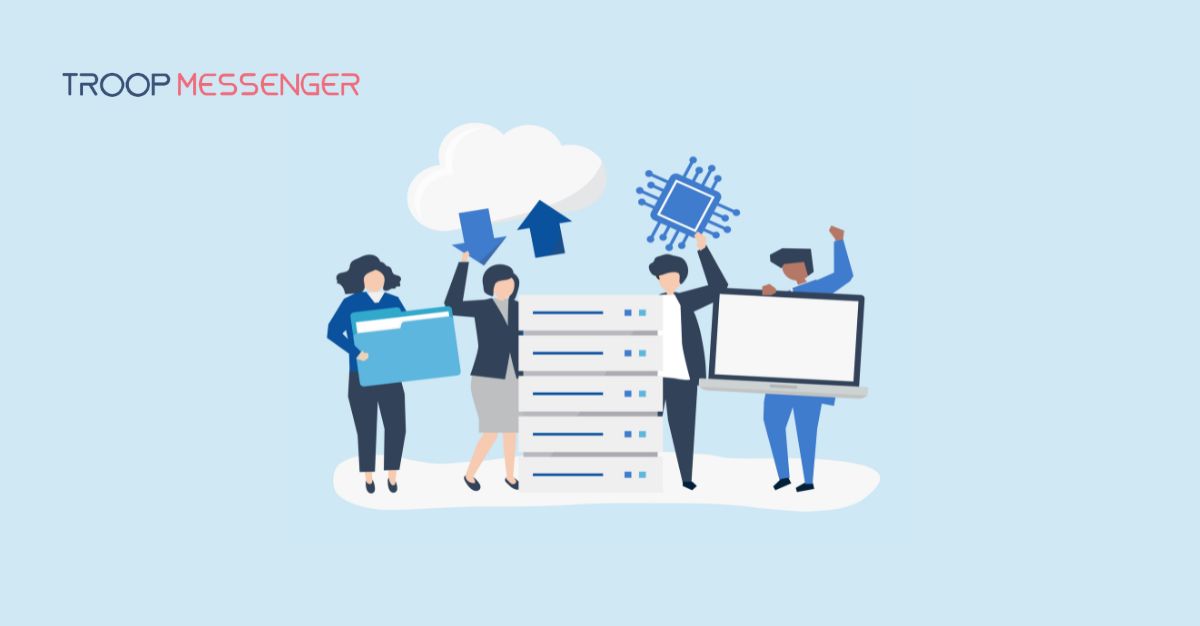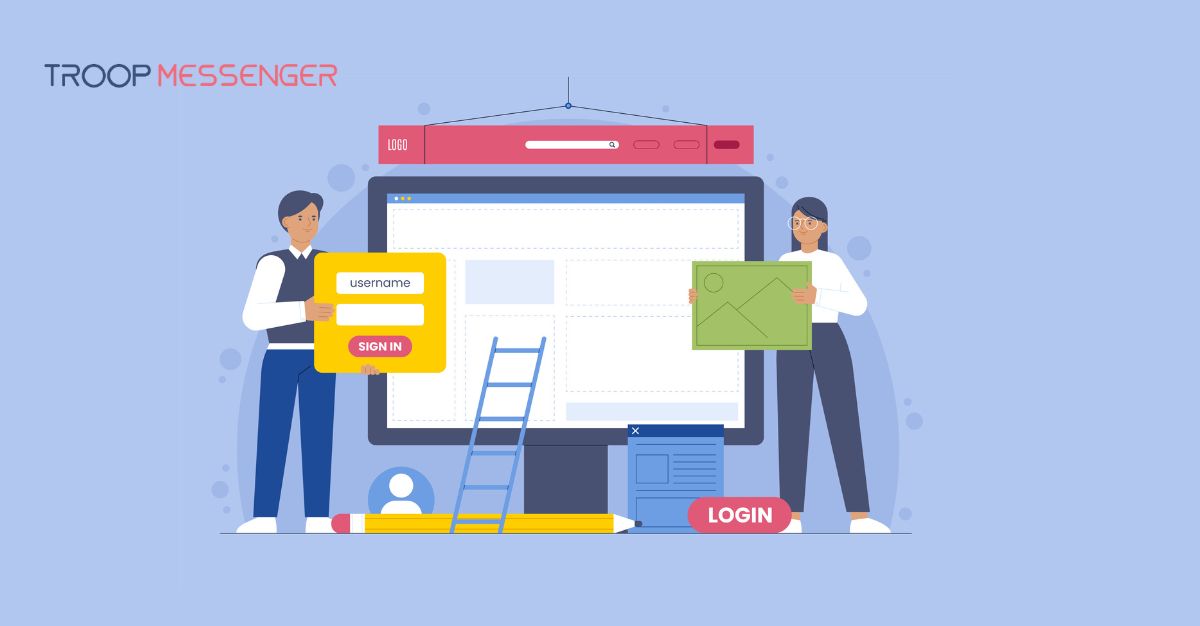Connect with us
.jpg)
Best Practices for Managing and Maintaining On-Premise Infrastructure
Most companies prefer on-premise infrastructure over cloud solutions in today's digital environment because of the unprecedented cyberattacks and loopholes in data maintenance. Since you observe companies implementing cloud solutions successfully, your thoughts may differ. However, the truth still stands that as soon as they start succeeding in the market, they realize it is critical to acquire control over their data since the more successful they are in the market, the more sensitive their data will be to vulnerabilities. So, they choose a self-hosting solution owing to the benefits of on-premise and the disadvantages of cloud solutions.
Industry experts claim that cloud solutions continue to exist since certain giant companies own them. Additionally, even though managing and maintaining the on-prem enterprise IT infrastructure can be done efficiently, some business owners perceive the process as complicated.
The benefits and best practices for managing and maintaining an on-premise infrastructure will be dealt with in this blog article.
To begin with, on-premises or on-prem refers to using the company's servers and IT environment on-site, allowing you to buy, rent, or lease the server-based software as a licensee and incorporate it into your company's current IT infrastructure.
Table of Contents
What is On-Premise Infrastructure?
On-premise infrastructure is a cloud computing environment only accessible by a single enterprise. They are often referred to as private clouds. Many organizations depend on this infrastructure to operate, and a devoted IT team must manage and maintain it properly to maintain top reliability and performance.
Businesses employ bare metal servers, virtual machines, and private clouds created on their internal data centers to create on-premise infrastructures. It updates regularly to ensure that companies, particularly those in industries with strict compliance standards, meet certain market expectations.
Advantages of On-Premise Environment
Many businesses use on-premise data centers to store and host their data because they have complete authority over the infrastructure, security, and data.
Data Ownership
In an on-premises solution, software and hardware, such as an on-premise chat server, are deployed locally and managed by the IT infrastructure of a company. The organization's leader or admin will manage and direct the related procedure.
Before being used, a company must license or acquire self-hosted software because the program is licensed, and the whole instance is housed on a business's property.
- Unlike the third party, you will have complete control over data that contains client or customer data.
- You can view your internal data, although you don't have internet connectivity.
- Given that you will be solely accountable for your data, you might be more aware of the security firewalls or procedures you employ as opposed to relying exclusively on the security measures offered by your third-party service provider.
- The on-premise infrastructure model grants the power to change, alter, and configure specific data within the software to adapt it to the company's needs and requirements. You will hold the license and property rights to the software.
Your business produces more data, owning to your transactions, the number of clients, vendors, teams, and so on you have. And Troop Messenger is much capable of storing & protecting it and giving you complete ownership of your data. To further explain, let's use the live example of a self-hosted messenger or on-premise chat solution like Troop Messenger.
Since this empowered chat solution eliminates the chances of a breach and provides complete access to your data, including your employees' identities, the information or data they post on the platform, and more, without relying on a third party, prompted defensive agencies to utilize this application as their defense messaging system.
Security
When deploying servers at a site or location, an organization has complete control, as mentioned above. It can administer and allow higher security management through individual or group activities. Administrators of the company are in charge of setting up firewalls and antivirus software, controlling user access, ensuring prompt deployment of security patches, and guarding against cyberattacks. On-premises will undoubtedly prevail in the on-premises or cloud debate because it gives businesses with qualified IT assistance the much-needed peace of mind of knowing all their servers are secure. That sensitive data isn't being given to a third party.
With the on-premise server model on your side, you will be empowered to deploy world-class security protocols. Given that on-premise is the only way to protect against cyber security threats, industries like health care, defense, finance, government, corporate, and others that are particularly concerned about their data prefer it. As a result, you can benefit from deploying top-notch security measures like using a cloud workload protection platform (CWPP); in fact, some businesses' security measures are significantly better than some well-known big cloud service providers.
Customization
Despite belonging to the same industry, not all companies run the same way, and as a result, their requirements don't align with those of the current cloud solutions. The perfect alternative to this is an on-premise deployment.
Customization is achievable in cloud solutions but on-premises infrastructure has much more flexibility.
This software's primary goal is to use technology to specifically address the business problems of each customer and offer a one-of-a-kind solution. The enormous benefit of customization and adapting software services to the requirements of each business is provided by on-premise installations. This customization can be accomplished using different combinations of software modules and platforms.
Compliance
Businesses that have to conform to strict compliance regulations may benefit from an on-premise solution. It is easy to establish compliance independently without relying on a third-party source, provided all your data is kept in-house. You can set security and privacy policies and ensure everyone in your organization follows them.
Managing and Maintaining On-Premise Infrastructure
An essential part of a company's technological ecosystem, on-prem infrastructure is extensively employed to host applications, manage sensitive data, and offer network services. And the managing and maintenance process might be challenging, but it can be done efficiently with some preceding effective techniques.
Maintenance and Upgrades
For the on-premise infrastructure to function efficiently, it must undergo routine maintenance and upgrades. Regular hardware and software audits, security updates, and component upgrades are essential to do this. Furthermore, regular maintenance makes sure the infrastructure functions effectively and reduces downtime.
Monitoring and Alerting
Given that you have total control over the hosting environment when using on-premises apps. In many respects, this can simplify the instrumentation of monitoring instruments. Wherever your applications are hosted, performance monitoring and administration are the same.
Regular monitoring of infrastructure functioning is essential. This means monitoring network traffic, keeping tabs on how hardware and software components are used, and seeing potential issues before they become severe operational challenges. As a result, you need to create alerts that may be set up to notify your IT team if specific events happen, like when an attack on security or a server falls offline.
The positive part to mention here is that with the help of tools for effective network monitoring out there, you are not short on choice when putting together a package to protect your mission-critical infrastructure. All that matters is that you select the ones best suited to your monitoring and alerting needs.
Disaster Recovery Planning
Disaster recovery (DR) planning is crucial because failure to do so could significantly impact your ability to maintain business continuity. IT personnel should have a strategy for data recovery and system restoration in case of a natural disaster, power outage, or cyberattack.
A business continuity plan with a high-availability (HA) and disaster recovery (DR) solution must be implemented, as well as regular data backups. For the plan to work as intended, these tasks must be completed.
Business concerns, functional requirements, and architectural principles should all be considered while creating a high-availability disaster recovery (HADR) solution for your on-premises application.
Security
Security measures are applied to both hardware and software to close any loopholes. Employing security measures like firewalls, intrusion detection systems, and antivirus software is crucial for defending against cyberattacks. Regular security audits and penetration tests can help find system weaknesses and vulnerabilities. Ensure that every part of your infrastructure is put through its paces as part of this. For instance, network penetration testing is just as necessary as scrutinizing the physical security of any IT assets.
Backup Plans
By using data backup and recovery solutions, data backup to local servers is quick and safe, safeguarding crucial intellectual property. A backup plan is critical, which includes regularly backing up data and applications to ensure critical data can be recovered during a disaster or system failure. Backups should be stored offsite or in a secure location to prevent data loss due to physical damage or theft.
Documentation
Updating the documentation for the on-premise infrastructure is essential to effective management. This requires keeping track of setup details, network topology, and hardware and software parts. Proper documentation may facilitate troubleshooting and speed up system uptime.
Conclusion
The aforementioned recommended practices may assist in ensuring that the infrastructure is operational and effective. By adhering to these, businesses can reduce downtime, enhance system performance, and safeguard against cyber attacks.
Since this blog allowed you to look into practical solutions, you can now consider managing and maintaining on-premise infrastructure not complicated.








